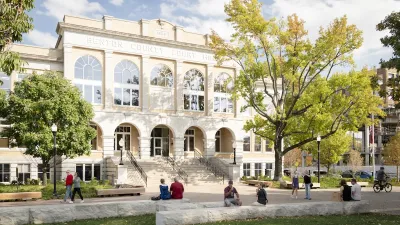A new study conducted by University of Colorado at Boulder, University of Pittsburgh and Duke University says that the scourge of gentrification is greatly exaggerated.
In their study of more than 15,000 neighborhoods across the U.S. in 1990 and 2000, researchers found that low-income, non-white households did not disproportionately leave gentrifying areas.
"In fact, researchers found that at least one group of residents, high school–educated blacks, were actually more likely to remain in gentrifying neighborhoods than in similar neighborhoods that didn't gentrify - even increasing as a fraction of the neighborhood population, and seeing larger-than-expected gains in income.
Those findings may seem counterintuitive, given that the term "gentrification," particularly in cities like New York and San Francisco, has become synonymous with soaring rents, wealthier neighbors and the dislocation of low-income residents. But overall, the new study suggests, the popular notion of the yuppie invasion is exaggerated. "We're not saying there aren't communities where displacement isn't happening," says Randall Walsh, an associate professor of economics at the University of Pittsburgh and one of the study's authors. "But in general, across all neighborhoods in the urbanized parts of the U.S., it looks like gentrification is a pretty good thing."
The researchers found, for example, that income gains in gentrifying neighborhoods - usually defined as low-income urban areas that undergo rises in income and housing prices - were more widely dispersed than one might expect."
FULL STORY: Gentrification: Not Ousting the Poor?

Alabama: Trump Terminates Settlements for Black Communities Harmed By Raw Sewage
Trump deemed the landmark civil rights agreement “illegal DEI and environmental justice policy.”

Planetizen Federal Action Tracker
A weekly monitor of how Trump’s orders and actions are impacting planners and planning in America.

The 120 Year Old Tiny Home Villages That Sheltered San Francisco’s Earthquake Refugees
More than a century ago, San Francisco mobilized to house thousands of residents displaced by the 1906 earthquake. Could their strategy offer a model for the present?

Rural Population Grew Again in 2024
Americans continued to move to smaller towns and cities, resulting in a fourth straight year of growth in rural areas.

Safe Streets Grants: What to Know
This year’s round of Safe Streets for All grant criteria come with some changes.

Rural Missouri Transit Service Could Lose State Funding
OATS Transit offers low-cost rides to primarily elderly rural residents with little or no access to other transportation options.
Urban Design for Planners 1: Software Tools
This six-course series explores essential urban design concepts using open source software and equips planners with the tools they need to participate fully in the urban design process.
Planning for Universal Design
Learn the tools for implementing Universal Design in planning regulations.
Clanton & Associates, Inc.
Jessamine County Fiscal Court
Institute for Housing and Urban Development Studies (IHS)
City of Grandview
Harvard GSD Executive Education
Toledo-Lucas County Plan Commissions
Salt Lake City
NYU Wagner Graduate School of Public Service





























